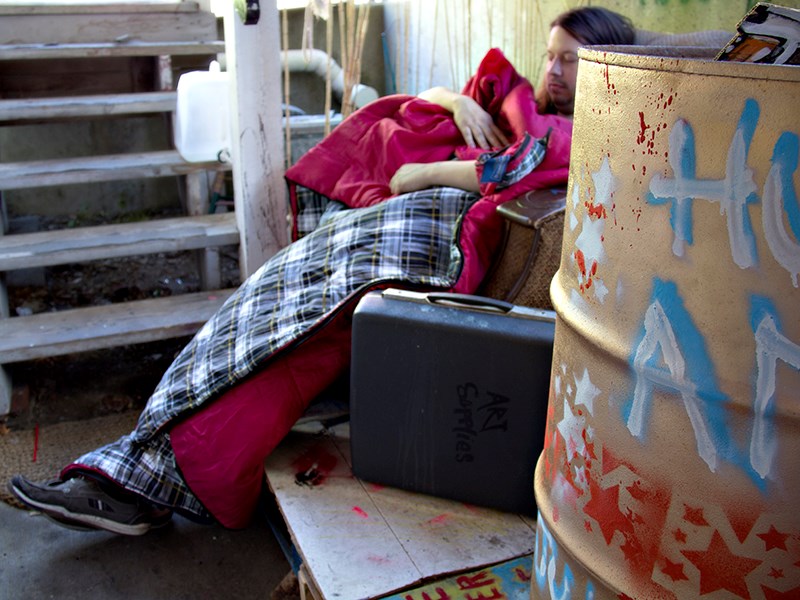In recent discussions about increased home sales and development in Powell River, something is noticeably missing. According to community leaders, that missing element is affordable rental housing.
“We know there’s a lack of housing, particularly affordable housing, and the cost of housing is going up,” said City of Powell River councillor Maggie Hathaway. “We seem to be having some sort of real estate boom and that makes affordable housing even less affordable. There haven’t been any new rental accommodations built for several years.”
Powell River Community Foundation’s 2015 Vital Signs report indicated no new apartment or rental housing starts in Powell River since June 2005.
Between 2005 and 2010, the percentage of Powell River households spending 30 per cent or more of household income on rent increased 4.7 percent, while the overall provincial increase was less than two per cent over the same period.
In September 2015, BC Non-Profit Housing Association released the Canadian Rental Housing Index, which concluded that affordability of rental housing in Powell River was a critical issue. According to that study, overspending on rental housing was identified as a severe issue, with 25 per cent of all renters paying more than half of their incomes on rent, and nothing in the near future suggests that trend is going to change. In fact, it may be worsening.
For Hathaway, the time for talk is over. She said the city needs something concrete; it needs a plan.
“We’ve been two years on council and haven’t really moved anything forward in the way of housing,” said Hathaway about the current group of elected officials. “We need to do something concrete and start establishing some plans.”
In September, the Tapping the Groundswell report will be presented to city council and the community; its original completion date was pushed back from June.
A project researching issues of child poverty and affordable housing for low-income people in the region, Tapping the Groundswell is funded by provincial and federal governments through their Job Creation Partnership and sponsored by Powell River Diversity Initiative (PRDI), which is a part of Powell River Employment Program Society (PREP).
Recommendations contained in the report are meant to provide part of a framework for a social plan that Powell River does not currently have.
According to Lyn Adamson, executive director of PREP and chair of PRDI’s steering committee, the report contains some recommendations about housing, but she said the problem cannot be solved right now because not enough is known. She said more research and data is needed and the Tapping the Groundswell team does not have the expertise to do that type of in-depth study.
“Regrettably, there needs to be a bit more research done on the actual makeup of our housing right now, compared to where we think the community is going to trend,” said Adamson.
One recommendation contained in the report is to find a way to encourage secondary suites. Rent in secondary suites, which are private units in existing dwellings, are often lower than apartments in conventional rental buildings and provide affordable housing for low- and moderate-income households.
“Across the country we can see that type of encouragement is really helpful in creating longterm, affordable housing,” said Adamson. “But how do you encourage it? Do you create a tax incentive if the person is going to build a secondary suite, or do you just zone it so it’s easier to do so?”
Adamson said different groups are using different methods around the country and more information is required before a policy can be implemented in Powell River.
“It’s hard to know what the right thing is,” she added. “We believe we should have a housing authority that looks into that and tries to figure out the right answer for Powell River.”
Local developer and builder Tod English said he believes that until the value of rental buildings increases and rent is higher, Powell River is unlikely to experience any multi-residential development for rental.
“It would be difficult for people to invest in multi-residential development, which is what we need, in this current environment because of where the rents are,” said English. “A $600 or $700 rent doesn’t warrant new construction.”
Powell River-Sunshine Coast MLA Nicholas Simons is holding town halls along the Sunshine Coast, including Powell River in September, to give constituents the opportunity to make suggestions and voice concerns about availability and affordability of housing.
“There are people on the upper Sunshine Coast whose housing is inadequate, tenuous and not conducive to allowing our communities to grow,” said Simons. “We have to find a way. There’s no excuse not to find some solutions. If it involves some more talk in order to make the action smarter and better, that’s good. If it’s talk to delay, then it’s not.”
Simons agrees with many other advocates for affordable housing and said the need for low-income housing has reached a critical level.
“I’ve heard questions and not a lot of answers,” said Simons. “Yes, we need action.”
Community Resource Centre (CRC) manager Martyn Woolley, who directly advocates for housing and tenants, said he is seeing 120 people a day at the centre and a lot of those people are looking for housing. Woolley said he starts each work day looking for housing for clients.
“I have a list of people who are looking for housing for all sorts of reasons,” said Woolley.
According to Woolley, CRC clients are all looking for the same thing: one- or two-bedroom, cost-effective, apartment-style housing.



